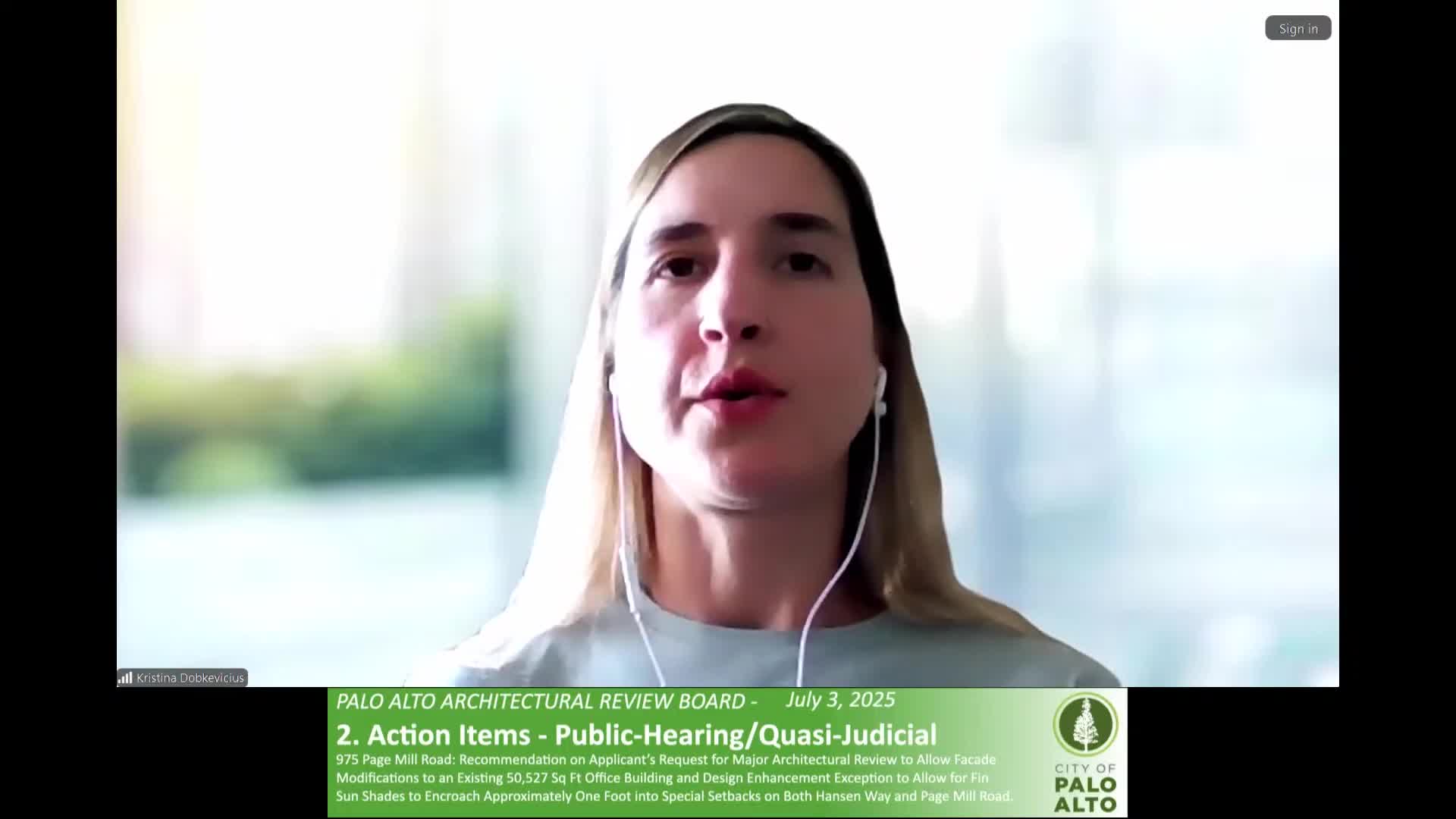City planning discusses special setback rules for Hanson Way bike lane redevelopment
July 04, 2025 | Palo Alto, Santa Clara County, California
This article was created by AI summarizing key points discussed. AI makes mistakes, so for full details and context, please refer to the video of the full meeting. Please report any errors so we can fix them. Report an error »

During the recent Architectural Review Board meeting on July 3, 2025, in Palo Alto, significant discussions centered around the special setback regulations affecting future developments, particularly concerning bike lanes and pedestrian access. The board emphasized the importance of maintaining clear areas along Page Mill Road and Hanson Way to accommodate potential infrastructure improvements, such as additional bike lanes.
The special setback, which applies to both road frontages, restricts the placement of permanent structures. However, the board clarified that hardscape elements like paving are permissible, while features such as walls and stairs may require exceptions. The proposed design for a new development included encroachments along Hanson Way, featuring a plaza with concrete walls and seating areas, which raised concerns about compliance with setback regulations.
Board members questioned whether there have been any exceptions granted for similar encroachments in the area. Staff confirmed that while some existing facilities may have nonconforming structures, no recent exceptions have been approved for properties along Hanson Way. The discussion highlighted a specific case where a hotel on El Camino Real received an exception due to the unique constraints of its site.
The board's deliberations also touched on the necessity of certain design elements, such as stairs and railings, which are not required for access but are intended for amenity purposes. Staff reiterated that any structures extending into the setback would need to go through a formal exception process, emphasizing the need for clarity in what is permissible under current zoning laws.
As the meeting progressed, the board sought to understand the broader implications of these regulations on future developments, particularly how they balance community needs with compliance. The discussions underscored the ongoing efforts to ensure that new projects align with Palo Alto's vision for accessible and well-planned urban spaces.
In conclusion, the Architectural Review Board's meeting highlighted the complexities of urban planning in Palo Alto, particularly regarding setbacks and the integration of community amenities. As the city continues to evolve, these discussions will play a crucial role in shaping the future landscape of Palo Alto, ensuring that developments serve both residents and visitors effectively.
The special setback, which applies to both road frontages, restricts the placement of permanent structures. However, the board clarified that hardscape elements like paving are permissible, while features such as walls and stairs may require exceptions. The proposed design for a new development included encroachments along Hanson Way, featuring a plaza with concrete walls and seating areas, which raised concerns about compliance with setback regulations.
Board members questioned whether there have been any exceptions granted for similar encroachments in the area. Staff confirmed that while some existing facilities may have nonconforming structures, no recent exceptions have been approved for properties along Hanson Way. The discussion highlighted a specific case where a hotel on El Camino Real received an exception due to the unique constraints of its site.
The board's deliberations also touched on the necessity of certain design elements, such as stairs and railings, which are not required for access but are intended for amenity purposes. Staff reiterated that any structures extending into the setback would need to go through a formal exception process, emphasizing the need for clarity in what is permissible under current zoning laws.
As the meeting progressed, the board sought to understand the broader implications of these regulations on future developments, particularly how they balance community needs with compliance. The discussions underscored the ongoing efforts to ensure that new projects align with Palo Alto's vision for accessible and well-planned urban spaces.
In conclusion, the Architectural Review Board's meeting highlighted the complexities of urban planning in Palo Alto, particularly regarding setbacks and the integration of community amenities. As the city continues to evolve, these discussions will play a crucial role in shaping the future landscape of Palo Alto, ensuring that developments serve both residents and visitors effectively.
View full meeting
This article is based on a recent meeting—watch the full video and explore the complete transcript for deeper insights into the discussion.
View full meeting
